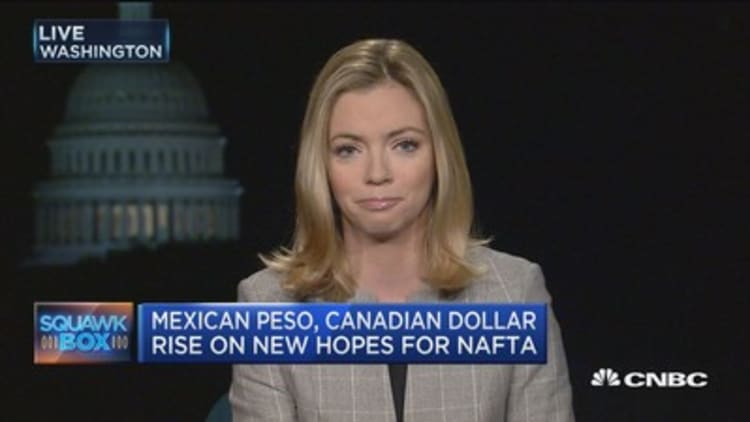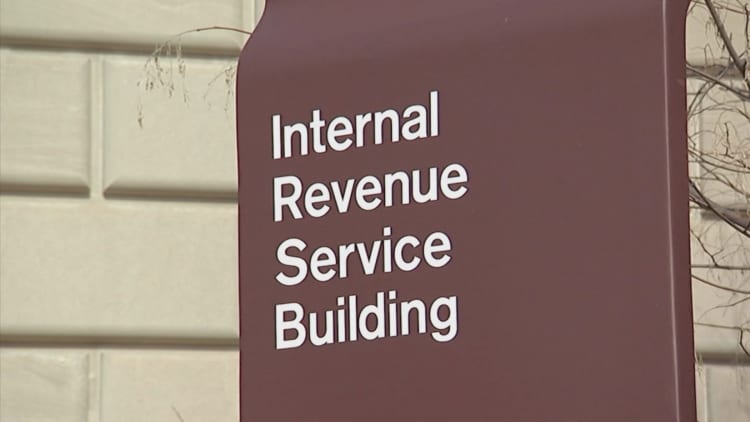The average price of the most popular types of Obamacare health plans sold on the federal insurance marketplace will be at least 34 percent higher in 2018, according to an analysis released Wednesday.
The Avalere Health analysis also found lower — but still double-digit — average price hikes for the other types of Obamacare plans, which go on sale Nov. 1.
Continued uncertainty in Obamacare markets, and the Trump administration's threats and eventual decision to cut off key payments to insurers are fueling the higher prices, Avalere said.
Many Obamacare customers will be insulated from those sharply higher rates because their premiums are subsidized by the federal government.
The subsidies can significantly reduce what a customer directly pays in premiums, with many subsidized customers being able to find a plan for $100 per month or less.
More than 80 percent of Obamacare customers who buy plans on government marketplaces get such subsidies, in the form of tax credits, because they have low or moderate incomes.
But customers who do not qualify for subsidies will get hit with the full impact of the price hikes. In many states, nonsubsidized customers will have to shell out more than $100 per month more than what they currently pay for their plans.
About 18 million people who do not get health coverage through a job, Medicare or Medicaid are covered by the types of individual health plans whose prices Avalere analyzed. And about 11 million of those people buy coverage through a government-run exchange.
Avalere's analysis came on the same day that prices for 2018 insurance plans were posted for public view on HealthCare.gov, the federally run exchange that sells individual plans in 36 states.

The health consultancy's report highlighted price changes for so-called silver plans, which are purchased by more than 70 percent of customers who buy coverage on government-run health exchanges.
Silver plans pay for 70 percent of their customers' health costs: such as surgeries, hospital stays, medical tests and prescription drugs. Customers are responsible for paying for the remaining share of charges.
The average price of silver plans sold on HealthCare.gov are increasing by 34 percent next year, Avalere said.
The report also found that the average prices of so-called benchmark plans — which are the second-lowest-priced silver plans in a market — are rising by 38 percent in 2018.
That is 13 percentage points higher than the price hike for benchmark plans in 2017.
Benchmark plan prices are used to calculate the value of the subsidies that help low- and middle-income customers pay reduced premiums.
The highest increases in silver plan rates were 69 percent in Iowa, where someone who was paying $593 per month for a silver plan this year will be faced with a $1,001 per month premium in 2018.
Other big price hikes are being seen in Wyoming, at 65 percent, Utah at 64 percent, and New Hampshire, at 50 percent.
In New Hampshire, according to Avalere's analysis, an unsubsidized customer who was paying an average of $462 per month for their silver plan in 2017, will pay $694 per month next year.
In Illinois, whose 31 percent average price increase in silver plans is close to the national average, a customer who was paying $620 per month this year will be faced with a premium of $815 per month in 2018.
A handful of states will see average price reductions for silver plans: Alaska, a 22 percent drop; Arizona, a 6 percent reduction; and North Dakota, a 4 percent drop.
Bronze plans are the second-most popular type of Obamacare plans, selected by 23 percent of customers of government exchanges.
The plans, which have the lowest premiums of Obamacare plans, cover 60 percent of customers' health costs.
Avalere said that bronze plans sold on HealthCare.gov are rising in price by an average of 18 percent.
Gold plans, which cover 80 percent of customers' health costs, are purchased by just 4 percent of Obamacare customers, and are among the priciest plans.
Gold plans will cost 16 percent more, on average, on HealthCare.gov, according to Avalere.
Platinum plans are rising in price by an average of 24 percent, Avalere said.
Fewer than 1 percent of Obamacare marketplace customers buy platinum plans. Those plans, the most expensive on the exchange, cover 90 percent of their customers' health costs.
WATCH: IRS to block returns that lack Obamacare disclosures



